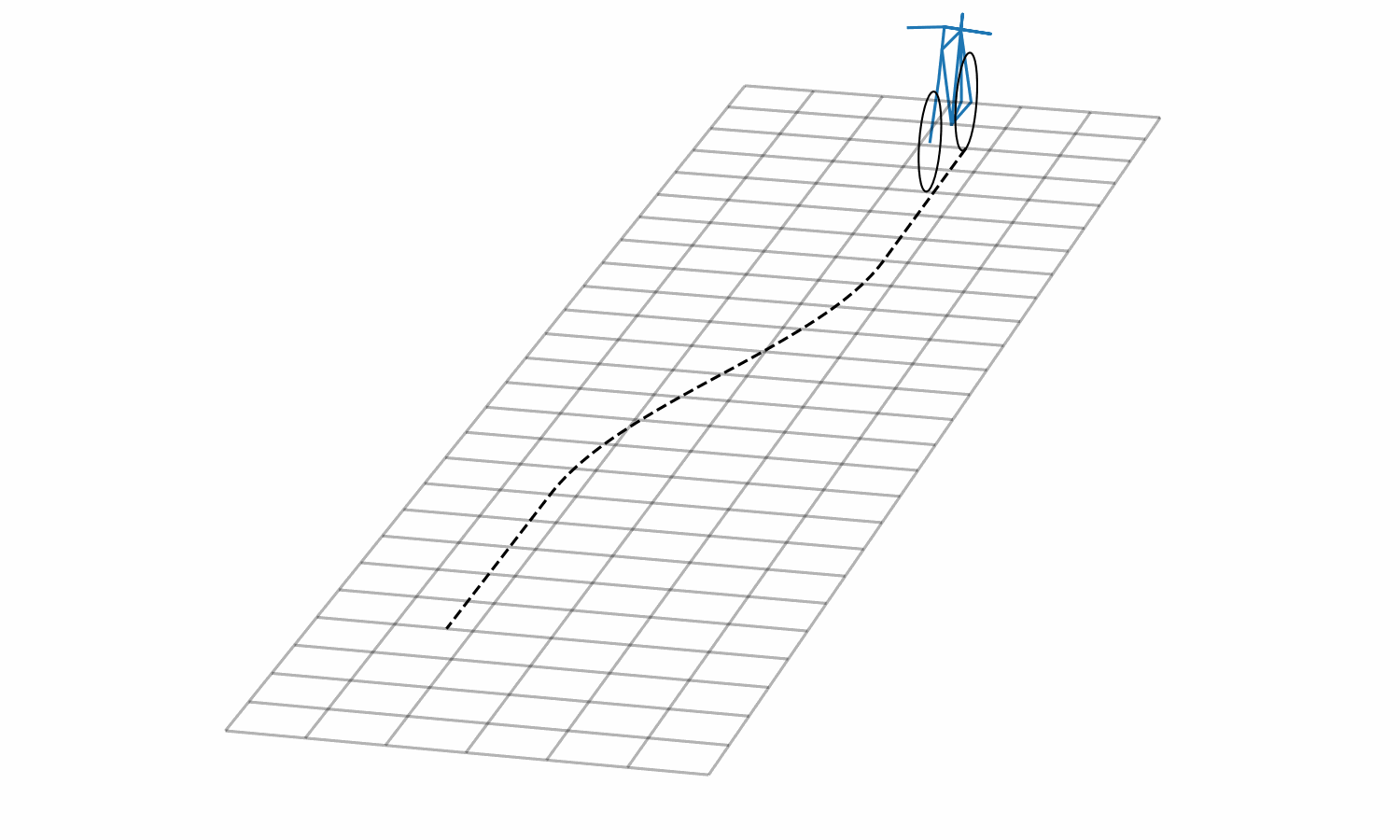
Lane change simulation created with BRiM showing without and without a rider.
We have developed muscle driven bicycle-rider models and solved basic trajectory optimization tracking problems, demonstrating that the models and tools work and are capable. You can see various results here in this blog post.
This MSc project would be focused on solving some real problems with the new tools. Here are some examples:
- What are the optimal strategies in balancing a bicycle if you ride no-hands versus steering only versus steering body movements? We also know you use lateral motion of your knees and that could be interesting to investigate.
- Use the tools to discover the closed loop control the human uses in the balancing task.
- Find the optimal race performance over an entire race course using the 3D model. You can investigate the effects of changing out different aspects of the bicycle: aerodynamics, rolling resistance, etc.?
- Find the effects of energy lost due to lateral motions of tires over the whole course.
There are numerous possibilities. You will be writing Python programs and working on the related tools.
How To Apply
If you would like to apply for this project, please send an approximately half page letter explaining your motivations and interest in the lab and project, CV or resume, a list of courses you've taken, the name of your MSc track, and any other relevant information to j.k.moore@tudelft.nl.

